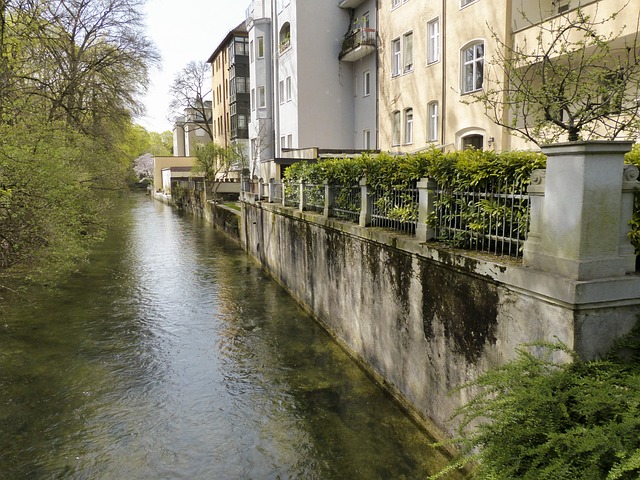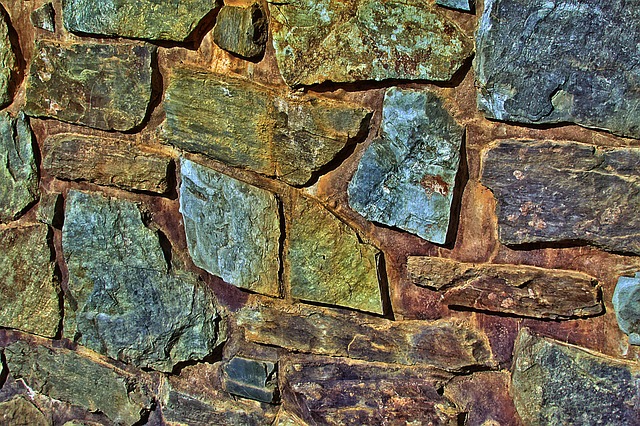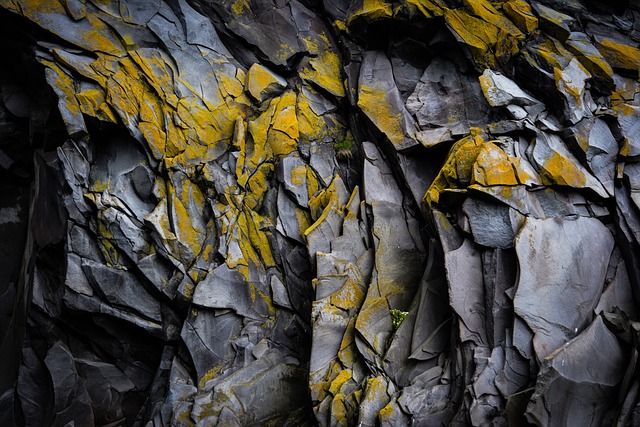When planning a retaining wall for property landscaping, it's essential to assess topography, drainage, and soil composition to address soil erosion, lateral earth pressure, and create usable sloped areas. The type and design of the retaining wall should be determined by these factors, with options including gravity walls, cantilevered walls, and sheet pile walls, each suited for different conditions. Homeowners and contractors must consider environmental conditions, the intended purpose, and aesthetic goals when choosing a system. Proper planning involves understanding soil types, groundwater levels, weather exposure, and moisture variations to maintain structural integrity and prevent water intrusion. Durable materials like concrete with steel or fiberglass reinforcements, treated timber, or eco-friendly gabion baskets are used in construction due to their strength and adaptability to various situations. Engineers employ geogrid reinforcement for stability, ensuring the foundation is deeply embedded and well-compacted to withstand soil pressures. Drainage solutions and precise inclination calculations are integral to the design process for long-term performance. Real-world case studies from North Carolina, Melbourne, and the Brazilian Amazon demonstrate the effectiveness of retaining walls in various environments, highlighting their importance in infrastructure development, land reclamation, and slope stabilization with a focus on sustainability and longevity.
When confronting terrain that demands containment or soil stabilization, strong and durable retaining wall solutions are paramount. This article delves into the essentials of selecting the right landscape features and materials for a robust retaining wall. From evaluating your site’s unique requirements to exploring various materials that withstand the test of time, we provide comprehensive insights. Additionally, through case studies highlighting successful implementations, we illustrate how design and engineering excellence contribute to effective retaining walls. Embark on this journey to understand the intricacies behind securing your landscape against erosion and slope failure with retaining wall solutions tailored for longevity and strength.
- Evaluating the Landscape: Identifying the Need for a Retaining Wall
- Material Matters: An Overview of Durable Retaining Wall Materials
- Design and Engineering Excellence: Ensuring a Strong Retaining Wall Structure
- Case Studies: Real-World Examples of Successful Retaining Wall Solutions
Evaluating the Landscape: Identifying the Need for a Retaining Wall

When assessing a property’s landscape, it becomes evident whether a retaining wall is necessary to manage soil erosion, support lateral earth pressure, or create distinct levels within a sloped site. A careful evaluation of the land’s topography, drainage patterns, and the types of soil present will guide the selection of an appropriate retaining wall solution. The stability and longevity of the wall depend on these factors, as well as the wall’s design and construction method. For instance, gravity walls, cantilevered walls, and sheet pile walls each offer unique advantages suitable for different site conditions. Homeowners and contractors must consider the local environmental conditions, the wall’s intended function, and the desired aesthetic when determining the most effective retaining wall system for their specific needs.
In planning for a retaining wall, understanding the forces at play is crucial. Soil types, such as clay versus sand, will react differently under pressure and moisture levels, affecting the wall’s performance over time. Additionally, the presence of groundwater and the site’s exposure to wind and weather must be accounted for in the design process to prevent water intrusion and structural failure. A well-designed retaining wall not only enhances the functionality of a landscape but also ensures its safety and durability, which are paramount for long-term satisfaction and property protection.
Material Matters: An Overview of Durable Retaining Wall Materials

When constructing a retaining wall, the selection of durable materials is paramount to ensure longevity and stability against soil pressure and environmental factors. Concrete, with its high compressive strength, is a popular choice for retaining walls due to its versatility and ability to be reinforced with steel or fiberglass to enhance resistance to cracking and degradation. The addition of rebar or mesh within the concrete matrix can significantly bolster the wall’s integrity, making it a reliable solution for holding back sloping terrain. Another robust material option is treated timber, typically pine or cedar, which, when properly maintained, can last for decades. The wood should be pressure-treated to resist rot, insect infestation, and weathering, ensuring the retaining wall remains effective over time. Additionally, timber walls can be designed with a variety of visual appeal, blending functionality with aesthetics. Gabion baskets constructed with wire mesh filled with stone or rock are also a sustainable option, offering a flexible and visually appealing solution that can accommodate varying ground levels and can adapt to settling or shifting ground over time without significant maintenance. Each material offers unique benefits, and the choice depends on factors such as the specific environment, the desired appearance, budget, and the expected lifespan of the structure. Retaining walls built with these durable materials not only maintain structural integrity but also contribute to the overall safety and functionality of the landscape.
Design and Engineering Excellence: Ensuring a Strong Retaining Wall Structure

When constructing a retaining wall, design and engineering excellence are paramount to ensure structural integrity and longevity. The foundation of a robust retaining wall must be deep and well-compacted to handle significant lateral and vertical pressures from the soil it retains. Engineers often employ geogrid reinforcement within the wall’s body to enhance its strength, allowing for thinner wall designs while maintaining stability. The choice of materials, including concrete, stone masonry, or modular blocks, each with their own advantages in terms of weight and durability, is critical. These materials must be selected based on the environmental conditions and the specific gravitational forces they will endure over time.
Incorporating proper drainage systems within a retaining wall design is equally essential to prevent water from saturating the soil behind the wall, which could lead to instability or collapse. Weeping tiles and filter fabric can be strategically integrated into the design to manage moisture levels and protect the wall’s foundation. Additionally, the angle of the wall itself plays a significant role in its performance; it must be engineered to account for the forces acting upon it, ensuring a safe and sustainable solution that stands the test of time and various weather conditions. Retaining walls are not just structures that hold back earth but are sophisticated systems designed to withstand dynamic environmental pressures while maintaining aesthetic appeal and functionality.
Case Studies: Real-World Examples of Successful Retaining Wall Solutions

In the realm of civil engineering, the efficacy of retaining wall solutions is often best illustrated through real-world case studies. Take, for instance, the construction of the Interstate 40 Retaining Wall in North Carolina, which successfully mitigated soil erosion and supported the embankment’s integrity over a decade. This project exemplified the durability of geogrid-reinforced retaining walls, showcasing their strength against environmental pressures and vehicular traffic loads. Similarly, in the development of the urban district in Melbourne, Australia, modular block retaining walls were employed to address the complex terrain, providing a sustainable and aesthetically pleasing slope stabilization that has withstood both time and weather-related challenges. These examples underscore the reliability and adaptability of advanced retaining wall systems, demonstrating their applicability across various terrains and environmental conditions.
Another notable application of retaining wall solutions can be seen in the reclamation of land for agricultural purposes in the Brazilian Amazon. Here, soil reinforcement with geosynthetic materials has proven effective in preventing landslides and maintaining the structural integrity of slopes. The success of these projects not only highlights the technical prowess of retaining wall design but also their significant role in environmental conservation and sustainable development, particularly in regions prone to slope failure and erosion. These case studies provide valuable insights into the versatility and resilience of retaining walls, reinforcing their status as critical infrastructure components in both urban and rural settings.
Retaining walls serve as critical infrastructure in landscapes, providing both functional and aesthetic benefits. This article has explored the essential aspects of selecting a suitable retaining wall solution, emphasizing the importance of evaluating landscape characteristics, understanding material properties, and applying design and engineering best practices. By examining diverse case studies showcasing successful applications, readers can appreciate the nuances of constructing robust and durable retaining walls. In conclusion, whether for slope stabilization or creating functional outdoor spaces, the right retaining wall is a cornerstone of effective land management and can significantly enhance property value and safety.
